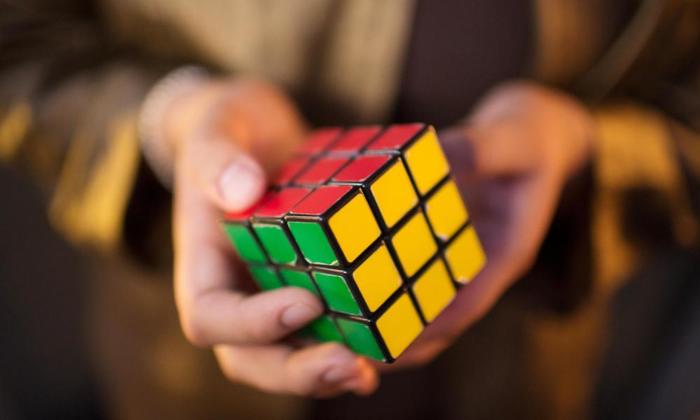In part 3 of our 'worst mistakes' series we take a look at the Logic Games section of the LSAT.
One of the best ways to get better at the LSAT is to take practice LSATs and learn from your mistakes. Reviewing questions you've missed—and not moving on until you are entirely clear on the error—is a crucial for your overall test performance.
But certain bad habits can really impede your progress on the LSAT. Here is the third and final installment of our multi-part series on the worst LSAT mistakes students can make—this time, focusing on Logic Games.
1. Failing to read all the rules of the game at the outset, and failing to distill those rules into a clear diagram.
Logic Games can be very intimidating. Students may feel panicked or overwhelmed as they start to read through the rules of a new game. These emotional reactions are understandable, but must be mastered if you are to excel on the LSAT.
Trust me on this: I was never one of those weirdos who "loved the games." I hated Logic Games. The very idea of them stressed me to my core. But I was able to fully and efficiently master them by wrestling every piece of information presented to me at the start of each game into a simple, clear diagram, and then I used that diagram to confidently and correctly answer all the questions. That is what you must do—and you can absolutely do it.
Truly, the Logic Games are won and lost at this crucial first step: reading the conditions of the game, and the accompanying indented rules, and placing that information into a usable, simple and comprehensible format.
How do you get good at this specific skill set? Here are some suggestions.
First, LSATMax has tons of free Logic Games setups for games that have appeared on prior LSATs. Find a game, give it a shot, and then review your performance by watching the LSATMax setup video carefully. Did you miss a deduction? If so, focus in on the rule or combination of rules (i.e. secondary inferences—more on this below) that allowed us to make that deduction. Logic Games are extremely repetitive so the hope is that this review process will allow you to make that deduction the next time you encounter that rule or combination of rules.
Second, as you practice games, develop a list of game types. Sequencing Games require a specific approach; Group Games a different approach. LSATMax materials can help you develop the skills and strategies you need to master various types of games; review these materials, and incorporate the lessons you learn from them into your LSAT prep.
Practice sequencing consistently and building larger sequence chains for Sequencing Games. Practice diagramming sufficient and necessary conditions and drawing secondary inferences from transitive and contrapositive statements for Group Games (Here is some help on Sufficient & Necessary diagramming; here is some more; advice on "unless" statements; advice on "no" statements; advice on "only" vs. "the only").
2. Failing to draw secondary inferences from initial game conditions (also known as: rushing from the game setup to the questions prematurely).
All right, so you've read the game conditions and indented rules and done a pretty solid job of converting all that text into consistent, easy-to-digest symbols and a clear setup. Time to read those questions and get those points, right?
Wrong.
Many Logic Games are written so as to reward those students who are able to draw secondary inferences from the given rules and conditions. For example, an LSAT game about birds may tell you that if one kind of bird is not in a forest, another kind of bird must be. What's the secondary inference? You can never have a forest entirely devoid of birds—if one kind of bird is out, that is sufficient to require the presence of another kind of bird.
These kinds of deductions are critical and can be hard to see—especially as you are just starting out in your LSAT prep.
The best way to get better at this skill is to practice in a very conscious way. Try to complete a game. Immediately thereafter, review the video and/or written explanation for that game very carefully, noticing all the inferences you missed. Next, study the game further to try to understand what clues should have helped you draw the inferences you missed. Finally, after some time, try once more to complete the same game. This time, really try to remember the inferences you overlooked the first time around.
This kind of intensive review helps train your mind to think very carefully about secondary inferences, and makes it more likely that over time your mind will be able to draw those inferences itself.
OK. Drawing secondary inferences is often critical to Logic Game success. But if you let yourself get too bogged down, you could waste precious time. Which leads us to mistake #3:
3. Wasting time searching for additional inferences beyond a certain useful point.
Yes, it is important not to rush from setup to questions, and to spend some time trying to draw secondary inferences before tackling questions. But each game is different, and on most games spending too much time on secondary deductions will prevent you from actually finishing the game and optimizing your score.
There are some Logic Games that will have no inferences before you proceed to the questions—these are generally Group Games where every rule is a conditional statement. Since every rule is a conditional statement, you cannot do anything until you know more, i.e. a conditional statement is invoked with the existence of the sufficient condition.
You must train yourself to be very decisive and aggressive in the first couple of minutes of each game in setting up a clean diagram and looking hard for secondary inferences—but you must also train yourself to MOVE ON after those initial moments and try to answer the questions.
In other words, spending too little time on your setup is a terrible mistake—but so is spending too much time. This isn't your fifth grade math test—there is no partial credit for showing your work on the LSAT. You only get those points you earn by bubbling in an answer.
This, too, is a skill that requires some practice to hone and perfect. Once you've started timed practice, try to develop a habit as far as how much time (max) you give yourself to set up a game before you move forward into the questions.
Best of luck!










